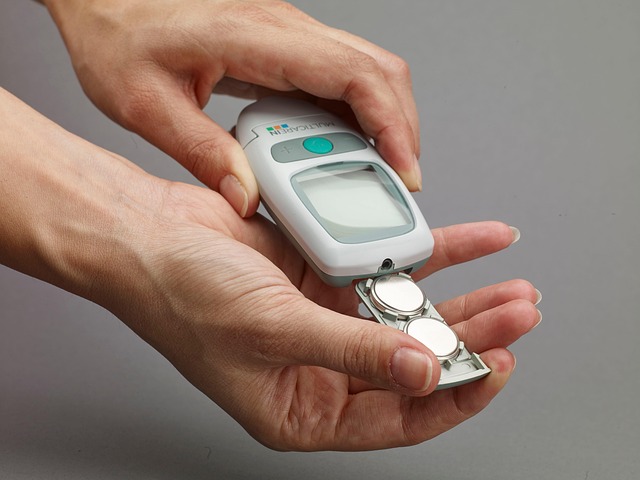Identifying bottlenecks in complex systems is key to enhancing efficiency. Specialized diagnostic tools like software analytics platforms, hardware sensors, and AI algorithms uncover hidden issues. Select Diagnostic Tools (SDT) offer industry-specific options for proactive problem-solving, particularly in healthcare, manufacturing, and technology sectors. These tools enable monitoring of KPIs, data-driven decision-making, and continuous system optimization through iterative improvements based on analysis.
Struggling with system slowdowns? It’s time to take control and boost performance. This comprehensive guide walks you through a step-by-step process to identify and resolve bottlenecks, from pinpointing problem areas to prioritizing enhancements. Discover the power of Select Diagnostic Tools to gather valuable insights and optimize your system’s potential. Learn how to analyze data effectively, making informed decisions for significant improvements. Start enhancing efficiency now!
- Identify Bottlenecks and Performance Issues
- Select and Implement Diagnostic Tools
- Analyze Data and Insights for Optimizations
- Prioritize and Execute Performance Enhancements
Identify Bottlenecks and Performance Issues

Identifying bottlenecks and performance issues is a critical first step in enhancing any system’s efficiency. By using specialized diagnostic tools, organizations can uncover hidden inefficiencies and bottlenecks that may be slowing down operations. These tools are designed to offer detailed insights into various aspects of a system, from network latency to resource utilization. For instance, portable clinical analysis instruments and neurological assessment devices have proven invaluable in healthcare settings, allowing for real-time data collection and quick issue identification. Similarly, gastrointestinal diagnostic tools can provide precise, immediate feedback on digestive system performance, aiding in the early detection of issues.
Select Diagnostic Tools (SDT) play a pivotal role in this process by providing an array of options tailored to different industries. These tools may include software-based analytics platforms, hardware diagnostic sensors, and even AI-driven algorithms that can predict potential problems before they occur. By leveraging SDT, businesses can proactively address performance issues, ensuring optimal system functioning. This proactive approach not only enhances overall system performance but also contributes to a more resilient and responsive operational environment.
Select and Implement Diagnostic Tools

Selecting the right diagnostic tools is a crucial first step in improving system performance, especially when it comes to complex operations. These tools play a pivotal role in identifying bottlenecks and inefficiencies within various processes, whether in manufacturing, healthcare, or technology. Opt for advanced blood analysis equipment, non-invasive health assessment tools, and water purification analysis tools that align with your specific needs. Each industry has its unique challenges, so choosing the appropriate diagnostic software or hardware is essential to gain accurate insights.
By employing these tools, you can efficiently monitor key performance indicators (KPIs), track changes over time, and make data-driven decisions. Advanced blood analysis equipment, for instance, enables precise measurements in healthcare settings, while non-invasive health assessment tools provide valuable data for preventive care. Water purification analysis tools ensure the quality of essential resources, making them indispensable in maintaining optimal system performance across diverse sectors.
Analyze Data and Insights for Optimizations

Analyzing data is a crucial step in identifying areas for system performance optimization. Organizations should invest time in gathering and examining insights from various sources, such as operational metrics, user feedback, and industry benchmarks. By selecting the right diagnostic tools, they can uncover bottlenecks, inefficiencies, and hidden opportunities for enhancement. These tools facilitate in-depth analysis of system behavior, enabling stakeholders to make informed decisions about optimizations.
In the context of healthcare, telemedicine screening tools, rapid antigen detection systems, and otolaryngology screening equipment provide valuable data that can drive performance improvements. For instance, efficient use of these tools can enhance patient care by reducing wait times, ensuring timely diagnoses, and facilitating remote consultations, ultimately leading to a more responsive and effective system.
Prioritize and Execute Performance Enhancements

To improve system performance now, prioritizing and executing enhancements is paramount. Start by selecting the right diagnostic tools to identify bottlenecks and inefficiencies. Utilize AI-powered diagnostic software or cardiac diagnostic equipment for thorough analysis and precise insights. These advanced water purification analysis tools not only help uncover underlying issues but also provide actionable recommendations tailored to your specific needs.
Once identified, focus on addressing critical areas first. Implement system optimizations, update outdated components, and allocate resources effectively. Regularly monitor post-enhancement performance using the same diagnostic tools for continued fine-tuning. This iterative process ensures that each step taken towards performance improvement yields measurable results, ultimately leading to a more robust and efficient system.
By meticulously identifying bottlenecks, analyzing data insights, and prioritizing enhancements, you can significantly improve system performance. Among various strategies, the strategic selection and implementation of diagnostic tools play a pivotal role in uncovering inefficiencies and guiding optimization efforts. Through this structured approach, organizations can achieve not just immediate gains but also long-term, sustainable performance peaks.
